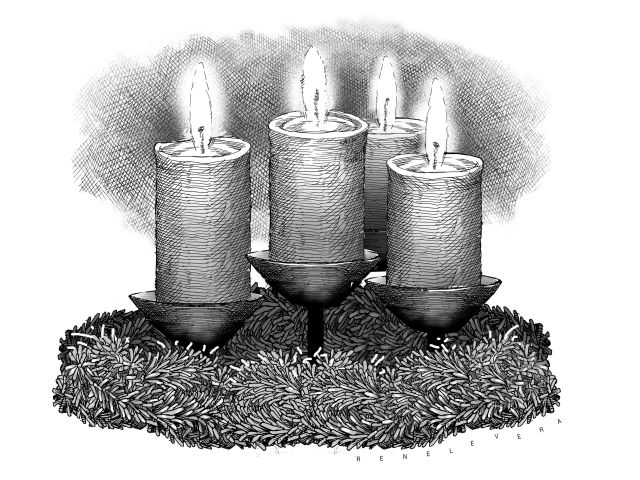
Except that we had a holiday at the end of November, and the first Sunday of Advent fell on the day before. But the first had no meaning for me, a retiree, and the second concerned the spiritual, which has no segments, rather than the day-to-day, with its well marked-out routine.
And yet how odd that the two inevitably intersect. The wife and I spent the second to the last day of November, a Sunday, in a newly-opened mall, a massive structure designed after the spiral-shelled nautilus. On each level, the shops lined both sides of a hall that stretched out into a circle, which we had not known, and in this it did not help that the crowd had all but occupied every inch of space, as a consequence of which we found ourselves endlessly walking. This made me think of the ouroboros – the tail-devouring snake – the symbol of the cyclical nature of the year.
An apt symbol to reflect on, because, in accordance with liturgical time, we had come to the end of the old year and the beginning of the new – Advent, the very first season of the ecclesiastical year, having arrived on the last Sunday of November, the fourth Sunday before Christmas.
I try to keep track of these seasons. In fact, when I listen to Vivaldi, as the violins progress from spring to summer to autumn to winter, I think of the parallel seasons of the spirit as well – Advent, Christmas, Lent, Easter and Ordinary Time. And this without much effort because, apart from the fact that the soul speaks through music, “The Four Seasons” has an interior feel, in that Vivaldi intended it as companion to his poems.
In the mall, as though on cue, the wife and I entered a shop selling religious objects, and there purchased an “Advent wreath,” an arrangement of four candles (three purple and one pink) within a ring of flowers and leaves. When we arrived home that night we lighted one candle with a prayer and a reading of scriptural passages, mostly prophecies about the coming of the Messiah.
A good number of these readings come from Isaiah. In fact, the Gospel for the first Sunday of Lent especially mentions him. Luke writes that “the word of God came to John the son of Zechariah in the desert.” As a consequence, John went around the area of the Jordan, “proclaiming a baptism of repentance for the forgiveness of sins.” John finds himself alluded to by the prophet Isaiah, “A voice of one crying out in the desert: ‘Prepare the way of the Lord, make straight his paths. Every valley shall be filled and every mountain and hill shall be made low. The winding roads shall be made straight, and the rough ways made smooth, and all flesh shall see the salvation of God.”
In the mall, one does not contemplate the words of John the Baptist, a ragged man urging a life of discipline and sacrifice. One goes there to shop and to eat, to gather the self again in, say, a coffee shop. Mostly, one repairs to such places to release the coils that have wound up the mind and body.
But in the process one might give a thought to happiness, which we all seek, which I think the vapors of really good coffee should suggest. And if one has a thing about philosophy, one might even agree or argue with St. Thomas Aquinas, who said that “God alone constitutes man’s happiness.”
If one sees that, outside, the sky has darkened, one can take this as a temporary happiness – an imperfect one, the only kind of happiness that the earth offers, according to St. Thomas – to be inside, in the words of Vivaldi in his poem on winter: “To rest contentedly beside the hearth, while those outside are drenched by pouring rain.”